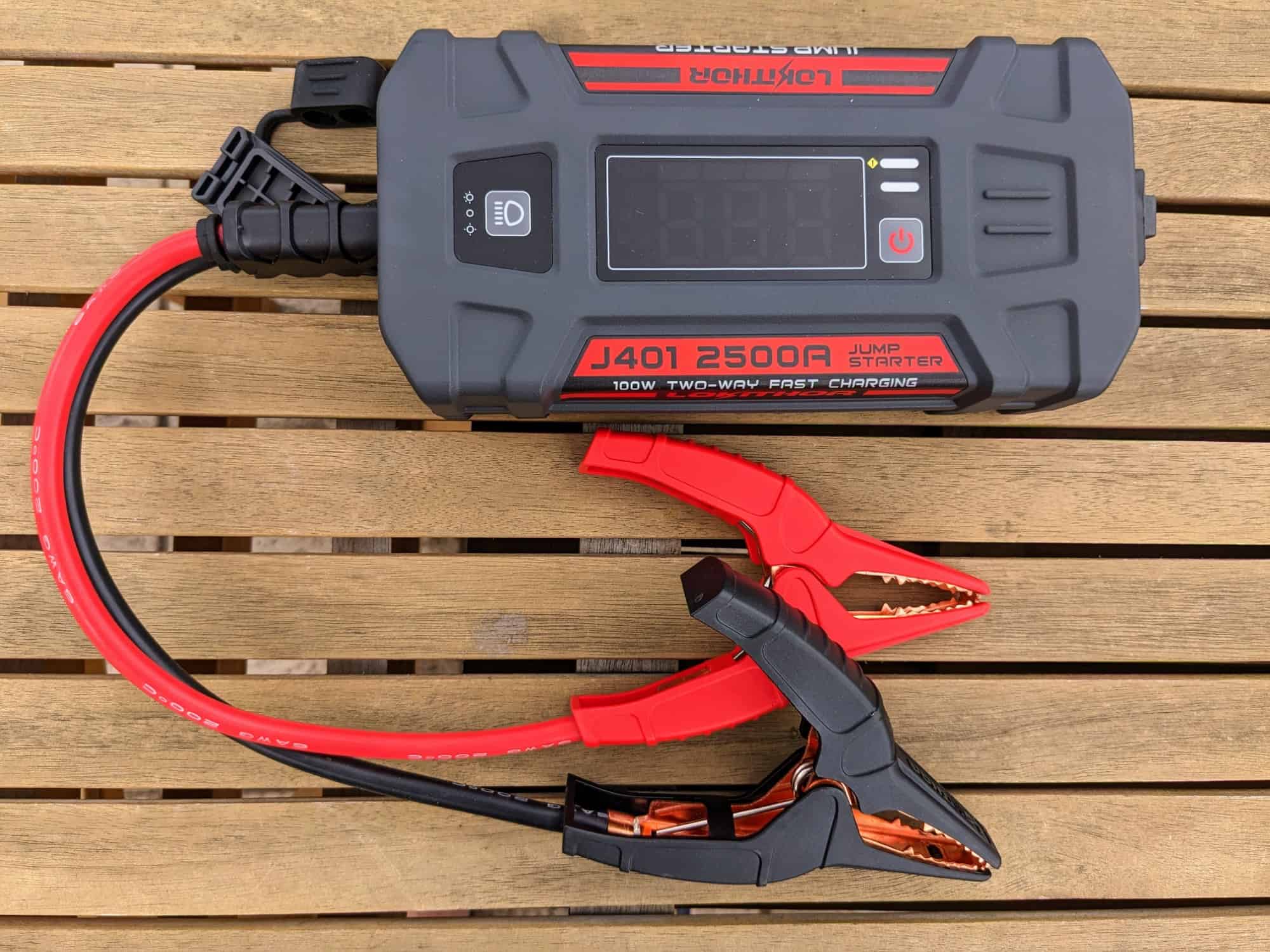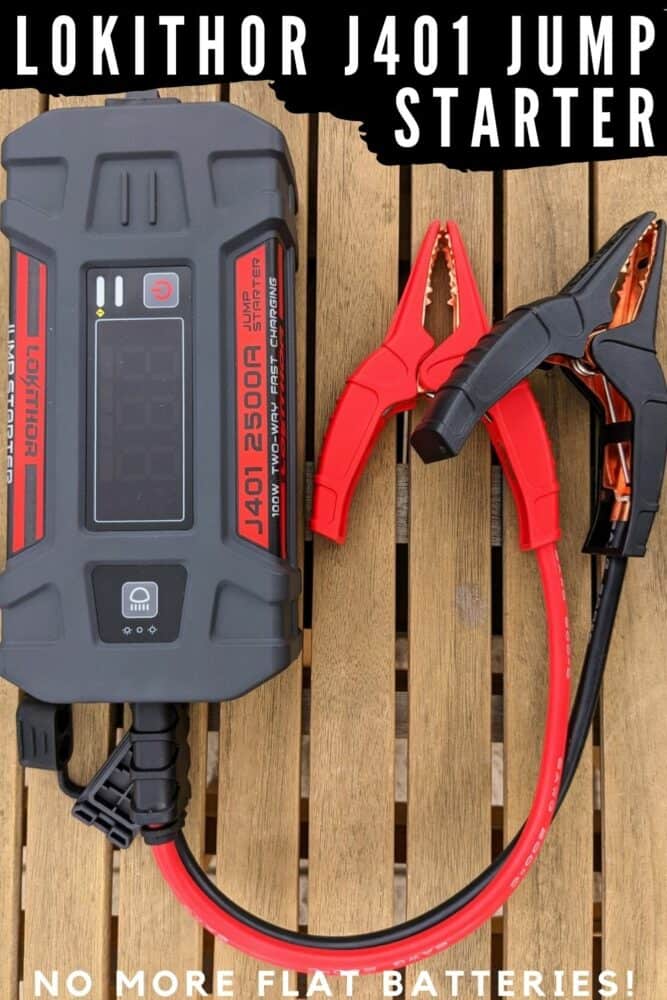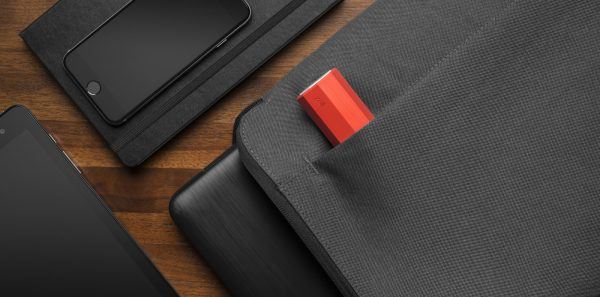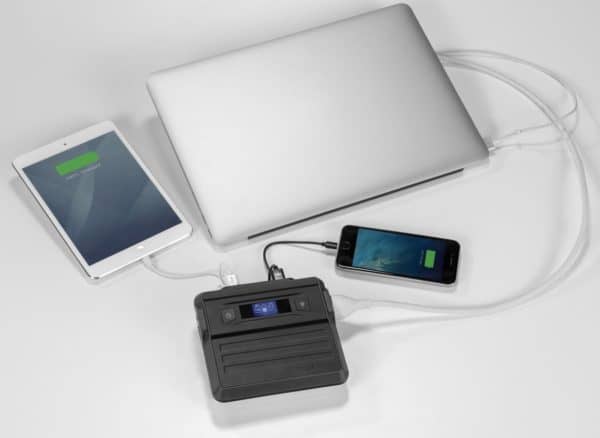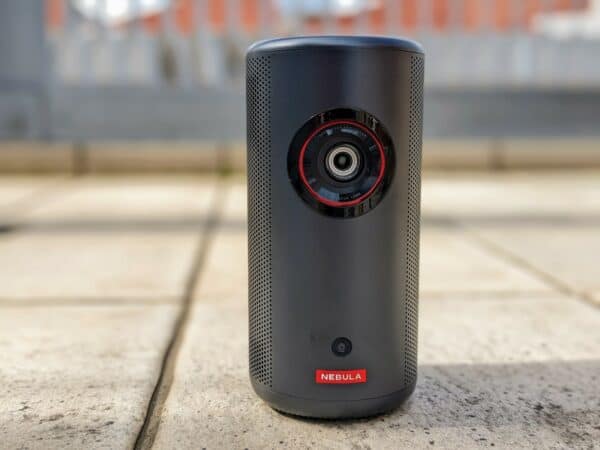Lokithor J401 Portable Jump Starter Review: No More Flat Batteries
We may earn a commission from purchases you make after clicking links on this site. Learn more.Portable jump starters are one of those things you don’t really think about, right up to the point where your car won’t start. It’s a big enough problem when it happens in your driveway, and a massive issue if it happens in the middle of nowhere, especially when you don’t have cell service.
These devices didn’t really exist a few years ago, but technology improvements mean there are now several companies selling some sort of jump starter that can live in your glove compartment until you need it.
Lokithor is one of the bigger players in this space, offering an expanding range of multifunction jump starters aimed at the home market. They’ll all let you jump-start almost any home or light commercial vehicle, provide a flashlight and strobe, and charge at least some of your devices; some do much more.
I spent a few weeks using one of the company’s jump starters at the start of this year, and came away pretty impressed by it. They recently sent me one of their newer models to take a look at, a version that simultaneously does both less and more than the previous one.
Would the J401 turn out to be an even better option for emergency situations? It was time to find out.
Features and Design
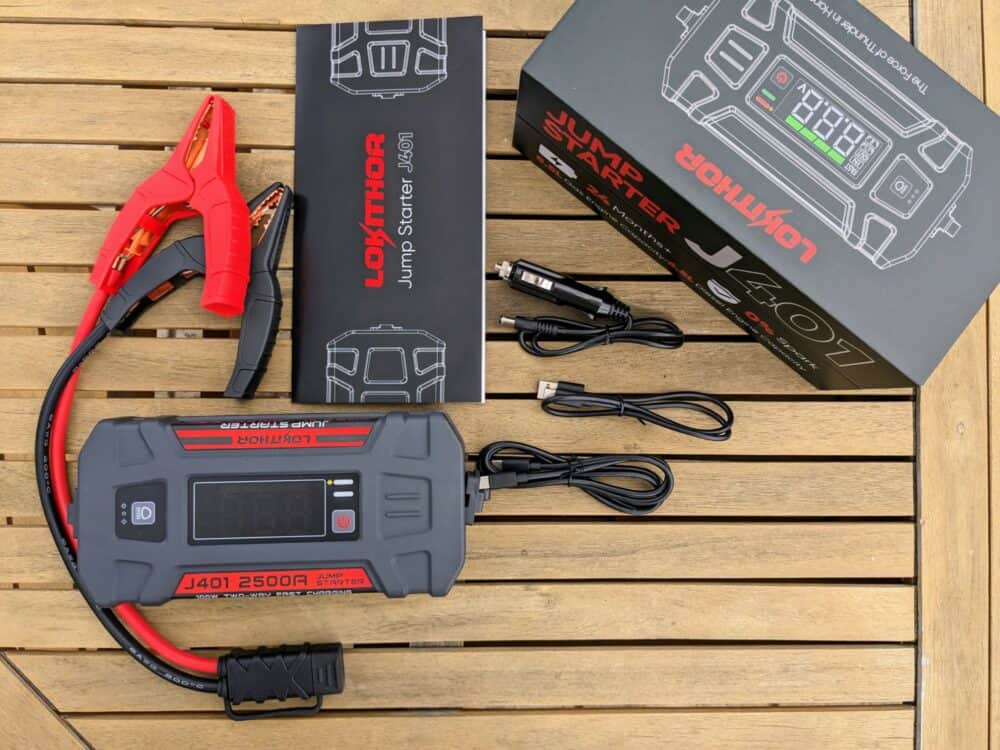
The J401 is one of the more straightforward models in the Lokithar range. Unlike the model I reviewed earlier this year, it doesn’t include an air compressor to inflate your tires. There’s no pressure washer built in either, and you can’t replace the battery with a higher or lower-capacity version.
Those features are useful if you need them, but add extra size, weight, and cost if you don’t. If all you’re really looking to do is start your vehicle when the battery dies, no matter where you happen to be at the time, you can get away with something simpler like this.
That said, the J401 does still have a couple of extras. There’s a 300 lumen flashlight on one end, for instance, which is more or less standard for these kind of portable jump starters. It does what you’d expect, with normal, strobe, and SOS lighting in both red and white.
More unusual is 100W USB C charging, which means you can fast-charge anything from a phone to a laptop with the inbuilt 20,000mAh battery. There’s also a USB-A port that can put out up to 18W: more than enough for older or smaller devices.
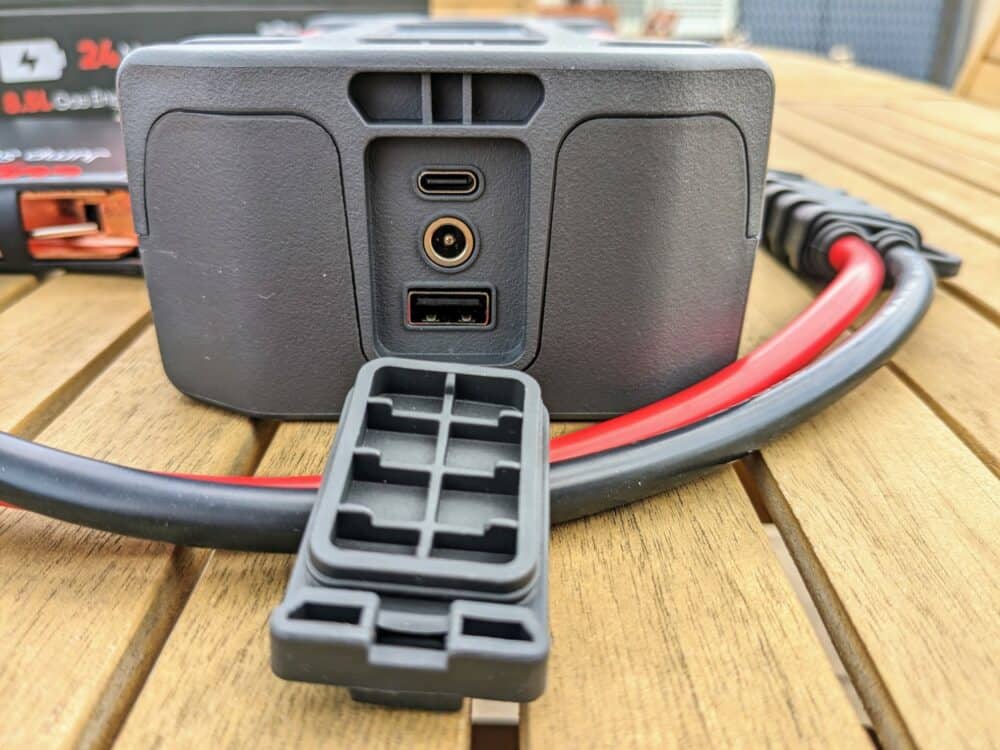
Assuming you haven’t been using it to power your family’s electronics, you can expect to get anything up to 60 jump starts out of the device. If you don’t use it at all, the battery lasts anything up to a couple of years between charges.
That’s what you want from something that’ll generally only be needed in an emergency, but really needs to work at that point.
It can jump anything up to a 6.5L diesel engine, or an 8.5L gas version. That’s enough for the vast majority of domestic and light commercial vehicles, but note that it’s 12V-only: 24-volt batteries are a no-go.
Alongside the unit itself, the box held a few other goodies, including a good selection of charging cables. As well as USB C to C and USB-A to C cables, I was pleased to see a 12v charger that plugs into your vehicle accessory port. That’s useful for something that’s likely to live in your vehicle most of the time.
Other than that, there’s just a set of fairly short jumper cables, and an instruction booklet that’s more comprehensive than most. The exterior has an IP65 rating against water and dust: in practice, that means it can get reasonably wet, but don’t submerge it in water. Just in case you were planning to.
Real-World Testing
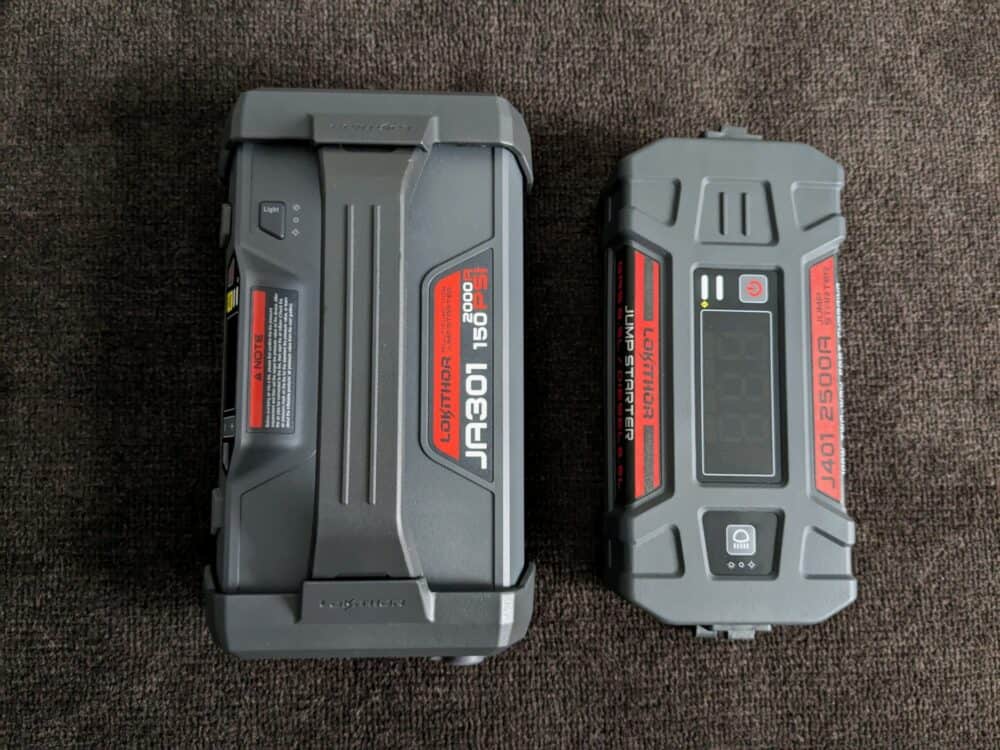
I mentioned it earlier, but there really is a noticeable size difference between the J401 and the company’s more-expensive models. Stripping out the extra features leaves you with a jump starter that’s noticeably smaller and lighter, even compared to the mid-range JA301 I looked at a few months ago.
| Length (in) | Width (in) | Height (in) | Weight (lbs) | |
|---|---|---|---|---|
| J401 | 9.5 | 4.2 | 2.4 | 2.4 |
| JA301 | 10 | 5.6 | 4.1 | 3.3 |
That size reduction gives more options about where you store it. With the JA301, while it could technically fit in the glove compartment of my small-ish hatchback, I had to remove most of the other stuff that was in there first. In practice, I just kept it under my seat instead.
Not so with the J401: it fitted easily in the glove compartment without taking anything else out. Even allowing for the jumper and charging cables, I’d be happy to leave it there permanently.
Using the device is pretty straightforward. Turn it on and it shows the voltage of your vehicle battery if it’s connected, or zero volts if it’s not. A basic indicator shows roughly how much juice you’ve got left, and icons let you know when the device is charging or when you’re using it to charge something else.
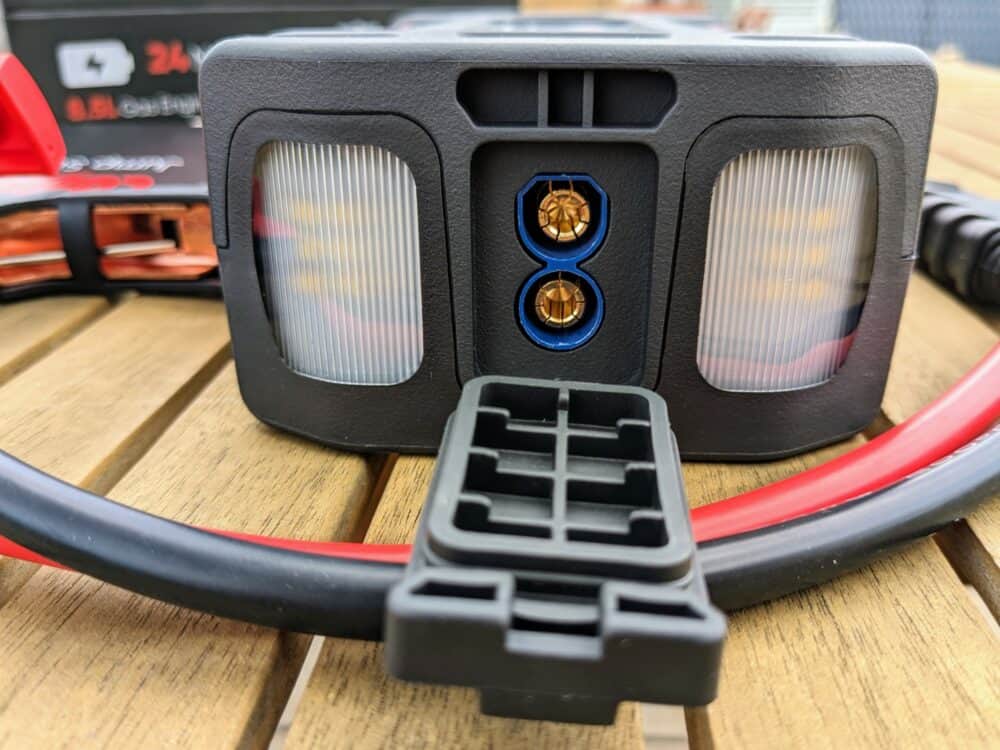
Connecting the J401 to my car battery was as straightforward as you’d imagine. The socket on the device has a different cutout for each hole, so you can’t put the jumper leads in the wrong way round. The alligator clips attached firmly to the battery terminals, and the voltage reading showed up immediately.
The default reading is for the jump starter and vehicle battery in parallel, but a quick tap on the power button switched it to showing only the voltage for my car battery by itself.
Like I say, though, the jumper leads are pretty short. It won’t be an issue on most vehicles, but if yours is particularly large or the battery is mounted somewhere unusual, you might end up with the device perched somewhere a bit odd while you’re using it.
My car hasn’t happened to have a flat battery recently: that’s good news in most ways, but not when it comes to testing a jump starter. A friend of mine got back from a month-long holiday the other day, though, to discover exactly that problem. How fortunate. Well, for me. Not so much for him.
Sure enough, after connecting the leads, the battery status went from “replace” to “recharge”, and the car roared to life with no complaints. There were no complaints from him, either: buying me a drink at a nearby pub was a lot cheaper than forking out for a new battery.
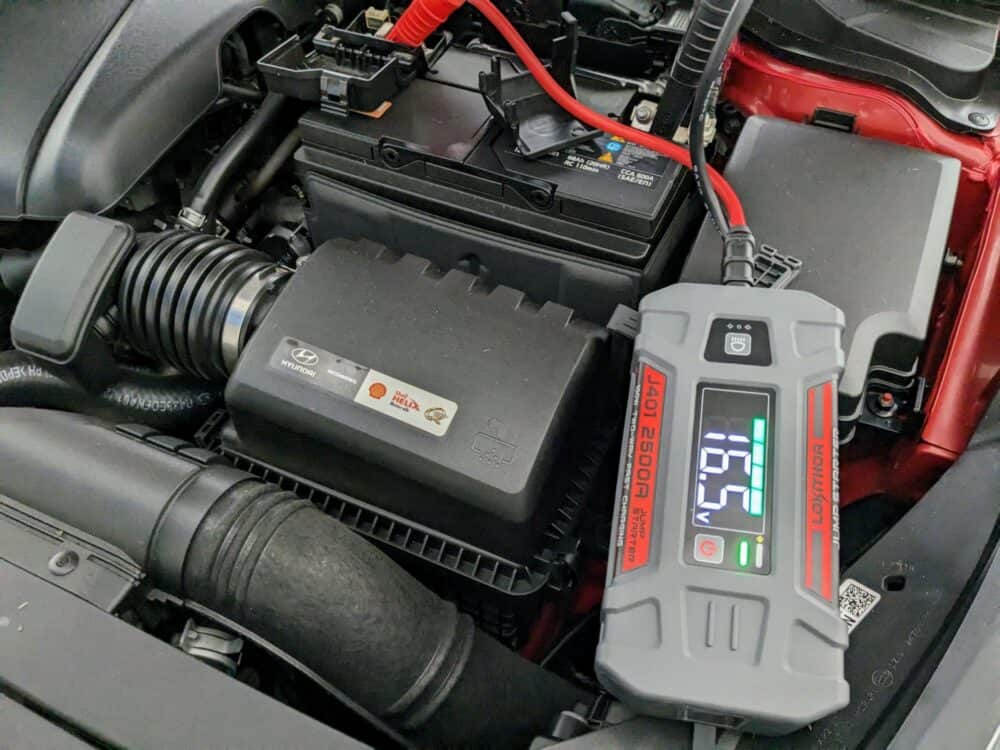
I was interested to see how well the J401 charged up my mobile devices: it’s the sort of thing I could see being useful on a camping trip or in an emergency. I started off by charging my laptop from 10% to 80% from the USB C socket. It took about an hour and 15 minutes, putting out up to 55W, which is about as much as the laptop can handle.
That moved the battery indicator from four bars to two, at which point I switched to powering my phone instead. It went from 40 to 80% in just over half an hour, drawing 15 watts at most: again, that’s roughly what it gets from a good wall charger. The battery indicator dropped down to a single bar.
Finally, I charged a few different gadgets like wireless earbuds and headphones from the USB-A socket. They all charged at normal speed, drawing 2-8W depending on what was plugged in at the time.
Charging the device itself back up from empty to full took 70 minutes using a 100W wall charger. Unless you’re using the cigarette lighter adapter that it comes with, you’ll need to supply your own charger: pretty much anything will do, but the less powerful it is, the longer it’ll take.
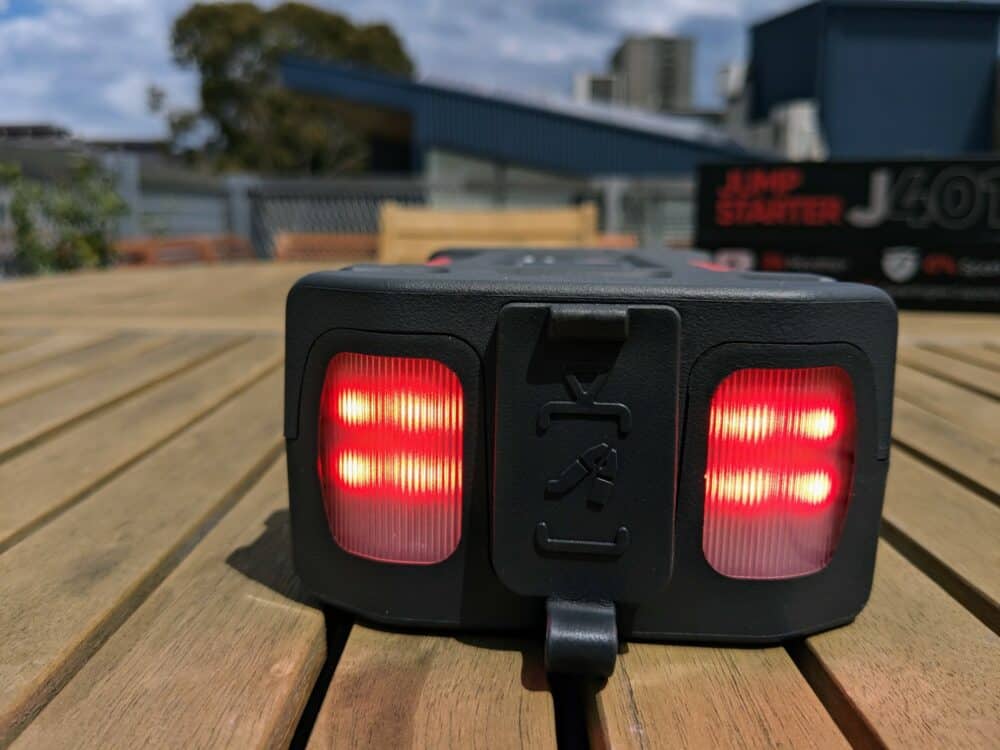
There’s not much to say about the flashlight: it’s a light, and it flashes. Or not, depending on your setting. It was fine for seeing into the car’s engine bay in a dark garage, certainly better than using my phone flashlight, and the strobe was definitely visible on both red and white light settings.
The light was reasonably bright at short distances, but it’s quite dispersed: I couldn’t see a long way in front of me at night. I’d probably still want to take a dedicated flashlight with me for camping, but this one would be more than acceptable in an emergency.
Verdict
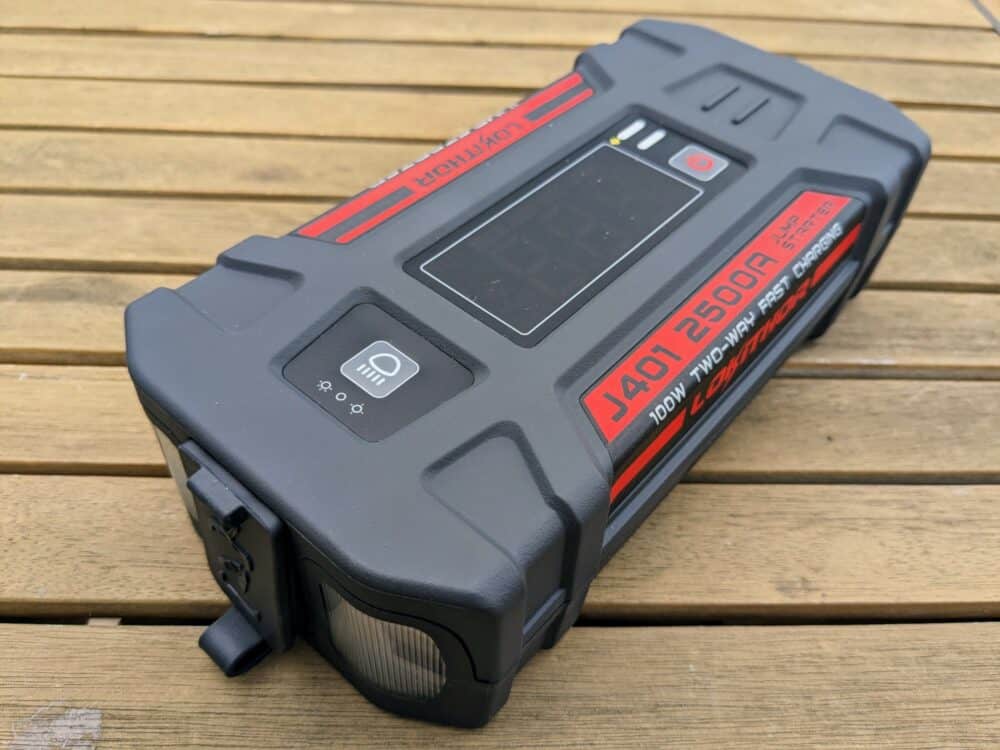
The Lokithor J401 is a simple-enough device that’ll help you out in a range of emergencies from dead car batteries to dead phones, or help you attract attention if it’s a problem you can’t handle on your own.
It’s comparatively small and light by the standards of these sorts of things, while remaining powerful enough to be useful. It’s also cheap enough that you can justify buying it, which is important for something that will likely sit unused in your glovebox most of the time.
While the addition of the air compressor makes the JA301 a more comprehensive “vehicle first aid kit”, you’ll pay extra for it, and it takes up more space in the car as well. If all you really need is the certainty that a dead battery isn’t going to ruin your day, save your pennies and go for the J401 instead.
Pros
- Reasonably priced
- Relatively small and light
- Can fast-charge laptops, phones, and tablets
Cons
- Relatively short jumper cables
All images via author

